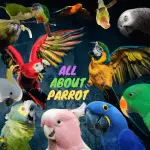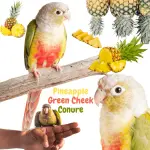
All you need to know about parrot body: The Genus Parrot (Psittacus) is the type of an important group of birds that ornithologists have successively considered to be a family of the Order of Climbers and as a distinct order under the name of Grippers, and which today forms the order Psittaciformes. It gathers the Parrots proper, the Macaws, the Cockatoos, Loris, Parakeets, etc. A curious peculiarity of many of these Birds is the ability they have to speak quite clearly and to debit even one and sometimes several sentences in a row; they learn also to counterfeit certain gestures and movements, to laughing, crying, coughing, meowing like cats, to bark like dogs, etc. They are, in a word, animals Imitators par excellence.
This ability, and also their plumage, often very richly colorful, explain why parrots were so sought after at all times and in all places. Thus, although they appeared in Rome for the first time only in the time of Nero, it is spoken of in Homer’s Odyssey, and in the poems of Catullus, and the species named by the modern Alexander’s Parakeet recalls that their introduction to Europe dates back to of the expeditions of this conqueror. Today, they have become exceedingly common worldwide, and the discoveries of America and Polynesia have made known a large number of more interesting species one than the other.
Very sociable and very easy to tame, Parrots are remarkable in their attachment and antipathies. We talked a lot too their longevity; It seems certain that they can live up to 80 years in domesticity.
Parrot body characteristics
The Psittaciformes or Parrots considered there together, have the following characteristics: Beak large, bulging, upper mandible very strong, arched from its base and strongly curved, ended with a more or less acute tip and often equipped on the edges of a tooth-shaped notch; inferior mandible always smaller and shorter than the upper, sheathed by this one and truncated at its tip.
Parrot legs
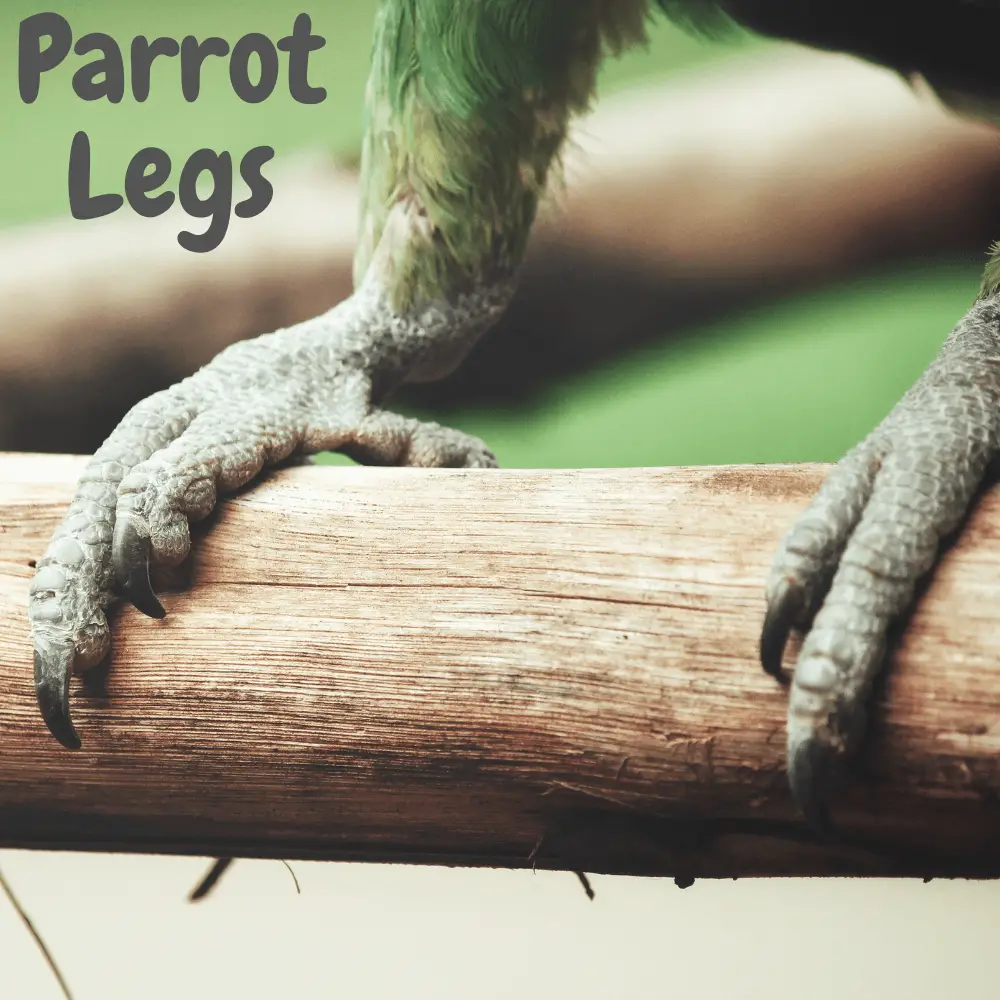
Zygodactyl legs, i.e. four-toed, two forward, and two backward. Tarsi is short, stocky, and scaly. Short wings or average. Tail rounded or tiered. These characteristics also show considerable variations which served to subdivide this order into genera.
Parrot plumage
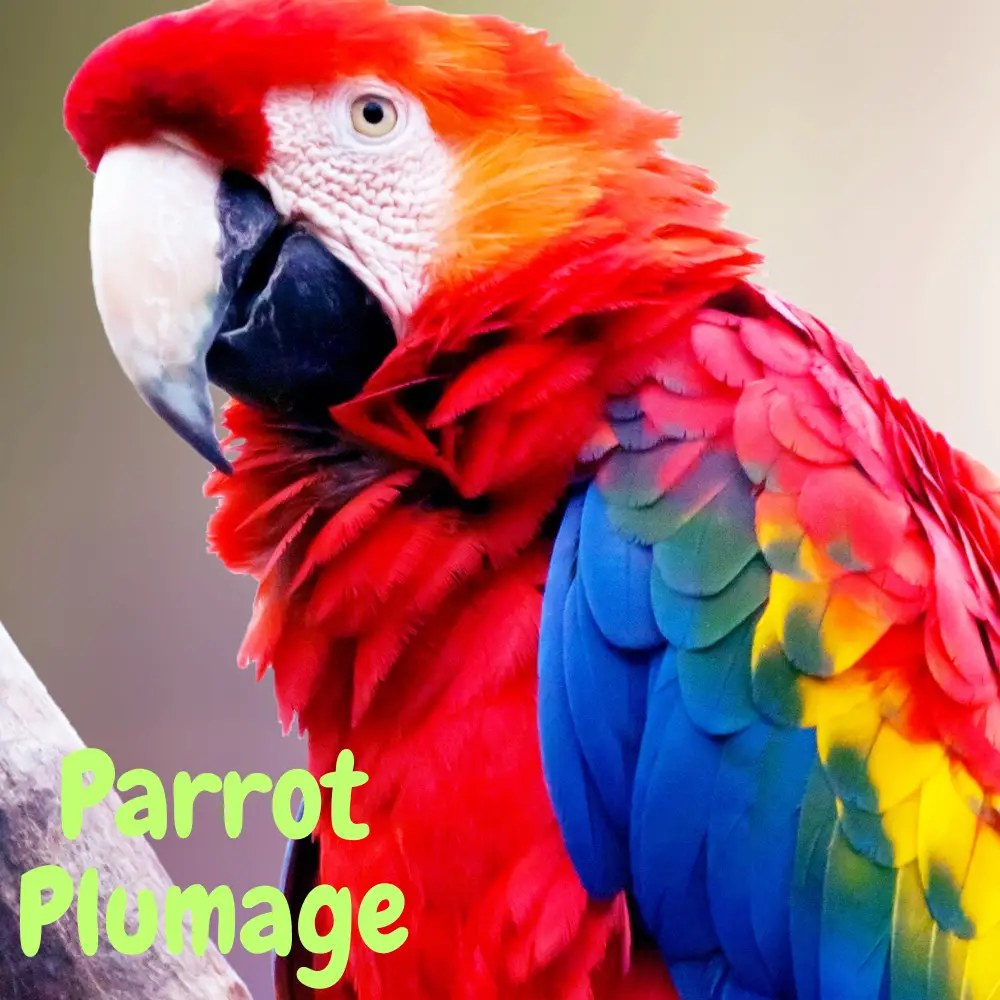
Parrots have a plumage remarkable for its bright colors and trenched, but not showing metallic reflections. Green is the dominant color, often highlighted by red, yellow, and blue on the head, wings, and tail. Red predominates in Loris and some Macaws; blue, in other macaws, and in small species of the genus Coriphilus; Yellow is rare. White, pink, and gray are observed in cockatoos; black, in Calyptorhynci, Microglosses, and Vazas, brown, finally, in a species of the Loris group (Chalcopsitta rubiginosa).
Parrot Beak

But what strikes first of all in parrots, is the great development of the beak, or rather of the upper mandible that often completely masks the inferior, especially in species that are used to hooding in holding this lower mandible hidden in the feathers of the chin: in the genera Euphema and Melopsittacus, this arrangement is so exaggerated that the top edge from the beak forms, in the state of rest, a perpendicular line or even retracting, the base of the beak, which carries the nostrils, being located thus the most prominent part of the face.
The opposite provision occurs in the genera: Nestor and Dasyptilus which have, so to speak, an eagle’s beak, with a horizontal edge, and whose lower mandible is relatively well developed.
This beak by the way is not only an organ of nutrition: it is also a third limb that the bird uses to climb from branch to branch: before moving its paws the Parrot attaches itself securely using the hook of its beak, and even on the ground, it often leans on the edge of the upper mandible.
This one is very mobile, thanks to the joint formed by The square bone and jugal bone, and the powerful muscles that connect the two jaws allow the bird to break the shells of the hardest fruits. The paw, with its four fingers, of which two in front and two in back, resembles the one of a Chameleon or certain Phalangers. It serves, as in monkeys, to put food in the mouth: the Parrot perched on one leg uses the other to carry at its beak the fruit that it carefully peels to eat the almond.
The beak of the Parrots is no less interesting to study indoors than outside. Its inner groove is provided with folds and roughness that serve to maintain fruit, and the musculature of the palace is highly developed. The edge of both jaws bears papillae, very visible especially in the embryo, and that Etienne Geoffroy Saint-Hilaire had once taken for rudimentary teeth or atrophied, an opinion still supported by Fritsch and Furbringer, who relied on this fact that ivory teeth and teeth corneas are only two forms of the development of the same organ: we see evidence of this in baleen cetaceans. Other naturalists (Blanchard, Braun, Fraisse) contradict this view.
Parrot Tongue
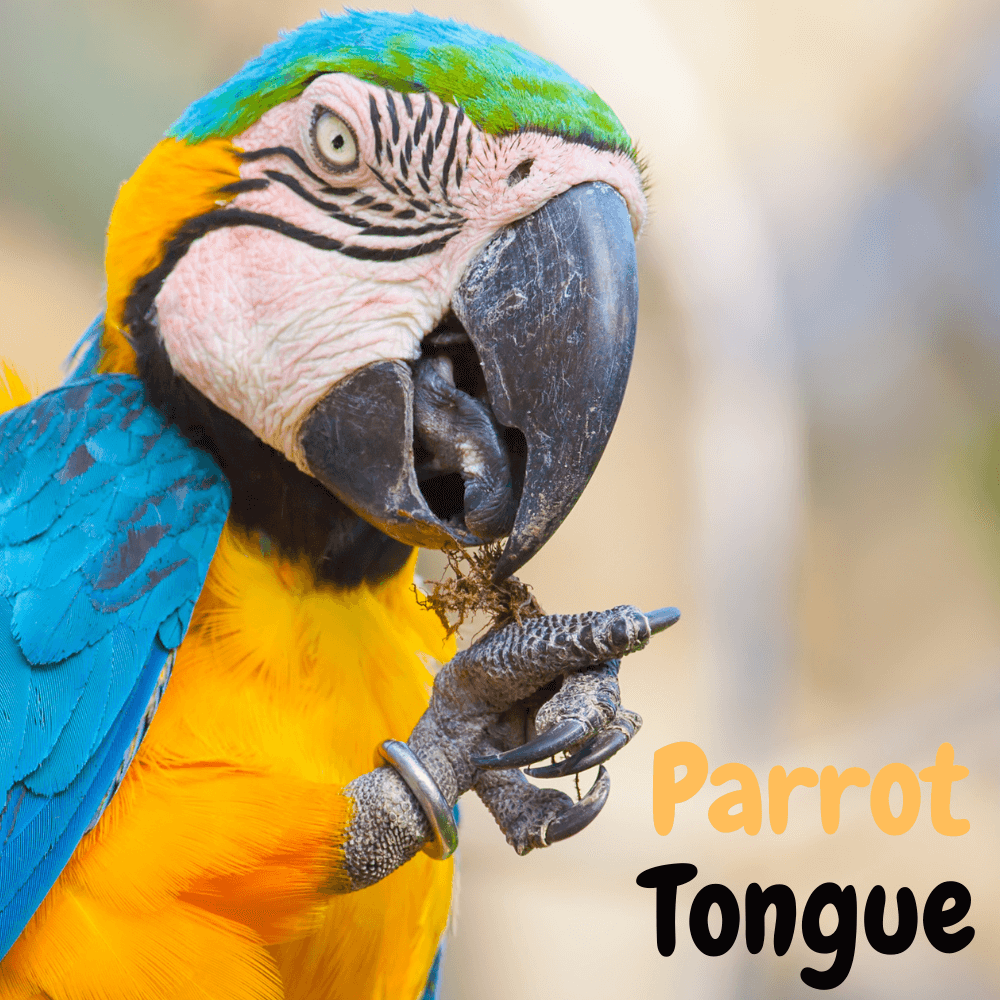
–
But what is above all remarkable here, is the language that is voluminous, cylindrical, covered with a dry, epidermis, and looks more like an organ of tact than an organ of taste. However, the Gourmandise des Perroquets is well known. Indeed, the appearance is here Misleading: a closer look shows that this language bears above an elongated and bifurcated groove whose groove is equipped with nerve papillae: the tip of the organ bears, below, a fold of epithelium in the form of a scale: finally, at the base of the tongue, we find well-developed glands; all These parts are very rich in nerves.
At Microglosses the tongue is red and shaped like an acorn. In Trichoglosses or brush-tongued parrots, this organ is covered with papillae in the shape of bristles, so that it looks like a brush with 250 to 300 arranged hairs on several rows. This tongue is used to collect pollen and nectar from the flowers of large trees, including palm trees and mimosas. The same provision exists in the genera Coryllis and Platycercus. These parrots often have their head all powdered with pollen and it can be assumed that they play, Like insects, a role in fertilization Flowers.
Parrot brain
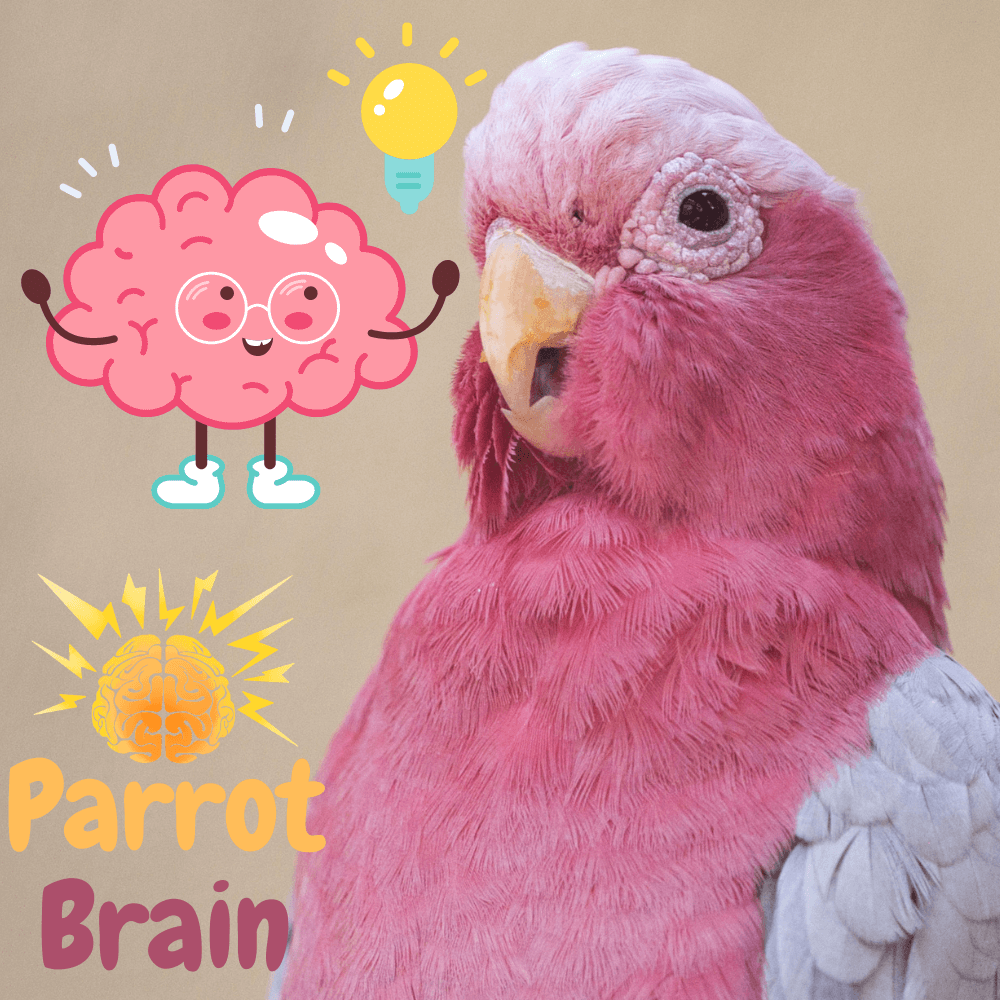
Despite the head size in parrots, the brain is not more developed than in the majority of Singing Passeriformes (e.g. Crows), and yields it even to the latter, although it is relatively as bulky as that of the human. But what distinguishes him is that he is not completely smooth like that of most Birds: it bears on each side a swollen lobe above and a protuberance underneath. Anyway, the intelligence of these Birds is quite narrow-minded and certainly inferior. to that of the Crows. What has always made them noticed and searched by humans, is the ability they have to imitate sounds and especially the human voice.
Parrot larynx
The larynx of Parrots is no more developed than that of Passeriformes Singers. many of which possess the same faculty imitation (Crows, Mainate, Mockingbird, etc.). Their syrinx or inferior larynx is even less rich in clean muscles than that of the latter: they have only three pairs of clean muscles (instead of five found in the Singing Passeriformes), and their trachea is very rigid.
So their voice is usually shrill and discordant, except in some small species (Melopsittacus), which make A real chirping. The perfection with which the great species reproduce articulated sounds, including the human voice, must depend above all, and whatever has been said, on the volume and mobility of the language as well as the width of the oral cavity.
All about parrot
All you need to know about the parrot
Parrots Distribution Geographical
Distribution Geographical parrots present peculiarities of high interest. Generally speaking, It can be said that they inhabit, at the present time, the area intertropical of the globe, but they are especially numerous in the hemisphere austral where they are much closer to the pole than in the boreal hemisphere: thus, in Patagonia, they reach 52° southern latitude; In the hemisphere Eastern, South of New Zealand, they reach the same latitude (Auckland Islands), while in the North they do not exceed 38° north latitude (Southern United States), and even in Asia the 30° (South of the Himalayas).
There exists neither in Europe nor in sub-Saharan Africa. The largest number of species are found in Oceania (Australia, Polynesia, etc.), New Guinea, and Malaysia. The other major region where parrots live is America from the South, finally Africa and Asia much less Rich. There are also other secondary regions characterized by the presence of distinct special types in New Zealand (Stringops, Nestor), in Madagascar (Coracopsis), and even in the Mascarene Islands; but these are extinguished.
Parrot food
Most Parrots feed on hard nuts and seeds rather than berries; Others (Licmetis, Enicognathus) deftly dig up the tubers of Orchids with their straight, pointed beaks like a plowshare; some cockatoos (Plictolophus sanguineus and Pl. roseicapillus) feed on salsuginous plants, as do Conurus carolinensis and Chrysotis amazonicus look for land and salt water.
The Stringops, which is terrestrial and nocturnal, feeds on lichens, fungi, and especially rhizomes of a fern (Pteris aguilina). The Conurus patagonicus, the southernmost of the American Parrots feeds near Buenos Aires on the pods and grains of an Akasia; in Patagonia, it is content with the leaves of a thorny shrub; in Cape San Antonio, it feeds on a simple grass, while in the same locality, the Bolborhynchus monachus devours the seeds of thistles.
The Platycerci are satisfied not the nectar of the flowers, they join insects to it, and Calyptorhynques are very fond of beetle larvae that gnaw tree wood; finally, the Nestors are omnivores and even carnivores, eating indiscriminately, depending on the circumstances and the season, tree flowers, insect larvae, young birds, carrion thrown into the road, and even attacking to live sheep.
Parrots live generally in more or less numerous bands of which Loud cries betray the presence in the middle of the foliage, trees. Australian species gladly come ashore and fall there like a flock of sparrows, to look for fallen seeds on which they feed. Some species (Pezoporus, Stringops) are more exclusively terrestrial, and others seek regions rocky and mountainous (Nestor). Most have an easy and fast flight, and that of the Wavy Parakeet (Melopsittacus) is reminiscent of the swallow. Many species make real migrations from North to South, depending on the season.
Except for the Inseparables (Agapornis) whose union lasts their whole life, in general, couples only form at the time of reproduction: the nest, placed in a tree hole, is always quite rude; the eggs are rounded and of a pure white; the young, of which there are only two in the large species, are born naked and are fed for a long time by the parents.
Order parrots
Order Parrots (Psittaciformes) currently contains about sixty genera and about 500 species. We will adopt here the grouping (rather artificial) of these genera in ten families: Conuridae and Pionidae which are American, with the exception of one genus of the latter (Paenocephalus) which is African; African Psittacidae and Palaeornithidae (with Madagascar), and Asia; Trichoglossidae, Nasiternidae, Plictolophidae, Nestoridae, Platycercidae, and Stringopidae which are from the Malayo-Australian region. The following table lists the main genera.
–
| Conuridés | SakeLong-range parakeets American tail: Conurus, Pyrrhura, Bolborhynchus, Brotogerys, Psittaculus. |
| Pionidés | Amazons or American parrots: Pionias (11 species), Chrysotis (36 species), Derotypus, CaicaPoeocephalus (African parrot, about ten species). |
| Psittacines | Psittacus (Gray Parrot or Jaco); Coracopsis (Vaza) |
| Paléornithidés | Old World Parakeets: Paleornis, Agapornis, Tanygnathus, Prioniturus, Eclectus (Short-tailed Parrots) of New Guinea), Psittinus, Coryllis, or Loriculus. |
| Trichoglossidés (Loriidés) |
Trichoglossus (about fifteen species), Calliptilus, Glossopsittacus, Psitteuteles, OreopsittacusLoris: Lorius, Charmosyna / Charmosynopsis (about ten species), Eos, Vini, Chalcopsittacus, Coriphilus |
| Nasiternidés | Psittacella, Cyclopsittacus and Nasiterna |
| Plictolophidés | Cockatoos, Calyptorhynci, Microglosses |
| Nestoridés | Dasyptilus (Nestors) |
| Platycercidés | Platycercus, Polytelis, Pyrrhulopsis, Aprosnictus, Psephotus, Nymphicus, Callipsittacus, Nanodes, Euphema, Pezophores |
| Stringopidés | Stringops (Nocturnal Parrot). |
Order Parrots had, in the Tertiary (![]() Cenozoic) period, a much wider geographical distribution than in the present era. The remains of a Psittacus have been found neighbor of the African Ps. erythacus (Ps. verreauxi) in the Miocene freshwater limestone of the south of France. More recently, in the Quaternary, the archipelago of the Mascarene Islands, and in particular the islands of Mauritius and Rodrigues, have possessed a special fauna, characterized by extinct genera.
Cenozoic) period, a much wider geographical distribution than in the present era. The remains of a Psittacus have been found neighbor of the African Ps. erythacus (Ps. verreauxi) in the Miocene freshwater limestone of the south of France. More recently, in the Quaternary, the archipelago of the Mascarene Islands, and in particular the islands of Mauritius and Rodrigues, have possessed a special fauna, characterized by extinct genera.
Lophopsittacus and Necropsittacus, which appear to link Australian Microglosses to American Macaws. Some of these species have only disappeared in historical times: such is the Mascarinus Duboisi, who still lived on the island of Reunion at the end of the eighteenth century and of which the Museum of Paris![]() preciously preserves a stuffed copy, considered as a great rarity. (E. Trouessart).
preciously preserves a stuffed copy, considered as a great rarity. (E. Trouessart).

